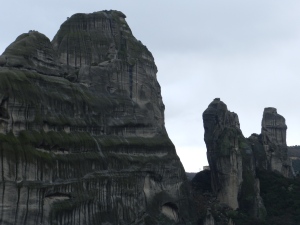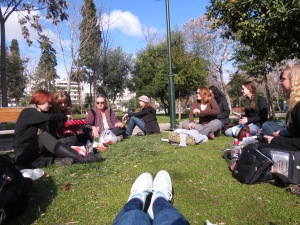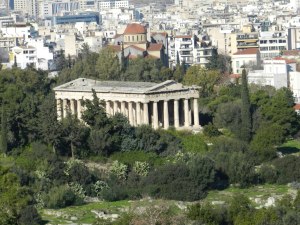Our third day on the road, we woke up in Kalampaka. We met our guide, Dominique, for breakfast and she joined us on the bus up to Meteora. We learned that the area surrounding Kalampaka, including the rocks of Meteora, used to be part of an ancient seabed dating back to 60 million years. The flow of the water created the giant sandstone spires of the rock and formed natural caves. In the tenth century AD, many caves were inhabited by monks in order to isolate themselves from society. Later, they were joined by others who created monasteries, some of which are still standing today.
The word meteora derives from a Greek word meaning "a place without a base." The monasteries are perched atop mountains that are often covered with fog, so they look as if they are floating without a base.
We visited the Holy Monastery of the Great Meteora, which is an active Greek Orthodox monastery. Because the monastery was all male, we ladies had to wear skirts before entering. In the sanctuary, we saw very well-preserved frescoes dating to 1400-1600AD depicting the martyrdom of saints and other scenes from the life of Christ. After 300 stairs back down to the bus, we began our drive to Mount Olympus.
We settled into our hotel and wandered the quaint little town that lies in the shadow of the mountain of the gods.
– Cassie and Angel


























